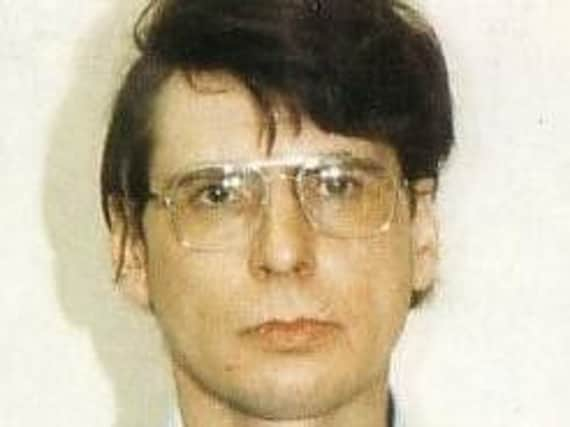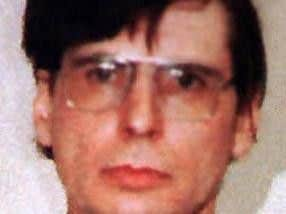Serial killer Dennis Nilsen faced 'unacceptable delay' before ambulance was called to Yorkshire prison


Nilsen, who is believed to have killed as many as 15 young men, including Sheffield-born Malcolm Barlow, "lay in his own faeces deteriorating for two and a half hours when a GP finally decided he needed to be taken to hospital", a report by Prisons and Probation Ombudsman Sue McAllister concluded.
Among his victims was 24-year-old Sheffield man Malcolm Barlow, an orphan with mental problems who had become a drifter in London when he encountered Nilsen in September 1981.
Advertisement
Hide AdAdvertisement
Hide AdAn inquest in Hull heard there was an "unacceptable delay" of 40 minutes before the ambulance was called to Full Sutton Prison in East Yorkshire, where he was serving a whole-life sentence, and he was taken to York District Hospital where he had emergency surgery to repair a ruptured abdominal aorta.


Although technically successful, he continued to deteriorate and died on May 12.
The inquest heard that Nilsen "rarely engaged" with healthcare staff and had declined screening designed to pick up abnormalities in the aorta, the body's main blood vessel, before a rupture.
The court heard Nilsen, who chopped up and even boiled the remains of some of his victims during his five-year killing spree, was a polite prisoner, who "used to tell stories from years ago." He was "very independent" and quite stubborn.
Advertisement
Hide AdAdvertisement
Hide AdIn a statement prison officer Tiffany Thomas said: "He held quite outdated opinions. He would generally talk about himself. He spoke to me about his time in the Army.
"He used to make stupid jokes on occasion to try and make us laugh. "
He had been well until he developed a rash on his face, the inquest heard.
Prison officer Suzanne Birch said Nilsen unusually rang his cell bell on the morning of May 10 and she found him pale and sweating, hunched over on his bed and complaining of an excruciating pain in his stomach.
Advertisement
Hide AdAdvertisement
Hide AdA member of staff from healthcare attended only after Ms Birch rang twice but despite his condition "she didn't seem overly concerned". "She told him he would need to attend healthcare later," Ms Birch said in a statement.
He was assessed by healthcare and a GP who thought he may have a urinary tract infection, and observations from the National Early Warning Score were "normal".
He was asked for a urine sample but was unable to provide one and declined to stay in the healthcare unit.
Coroner Professor Paul Marks probed the length of time it took to get the ambulance through security into the jail.
Advertisement
Hide AdAdvertisement
Hide AdHe was told by paramedic Jennifer Eaglesham that getting in only took about five to 10 minutes but getting him out of his cell to leaving the jail took 20 to 30 minutes.
She said she found him breathing very fast, and looking "ashen and extremely unwell".
Prof Marks said he was concerned by the delays and would write to NHS England to see if it was possible to have staff trained in advance life support available in jails.
Healthcare staff are currently only trained to deliver intermediate support.
Advertisement
Hide AdAdvertisement
Hide AdThe medical cause of death was pulmonary embolism and retroperitoneal haemorrhage, contributed to by deep vein thrombosis and abdominal aortic aneuryism.
Professor Marks concluded that Nilsen had died of natural causes.
Nilsen became known as the Muswell Hill Murderer after he carried out a murderous spree of near-unparalleled savagery in the late 1970s and early 1980s.
The Scottish murderer is believed to have killed as many as 15 men, most of them homeless homosexuals, at his north London home.
Advertisement
Hide AdAdvertisement
Hide AdHis crimes were only detected when a drain outside his home in Cranley Gardens, Muswell Hill, became blocked by the human remains he had tried to flush away. He was jailed for life with a recommendation he serve a minimum of 25 years in 1983, on six counts of murder and two of attempted murder. This was later upgraded to a whole-life tariff.